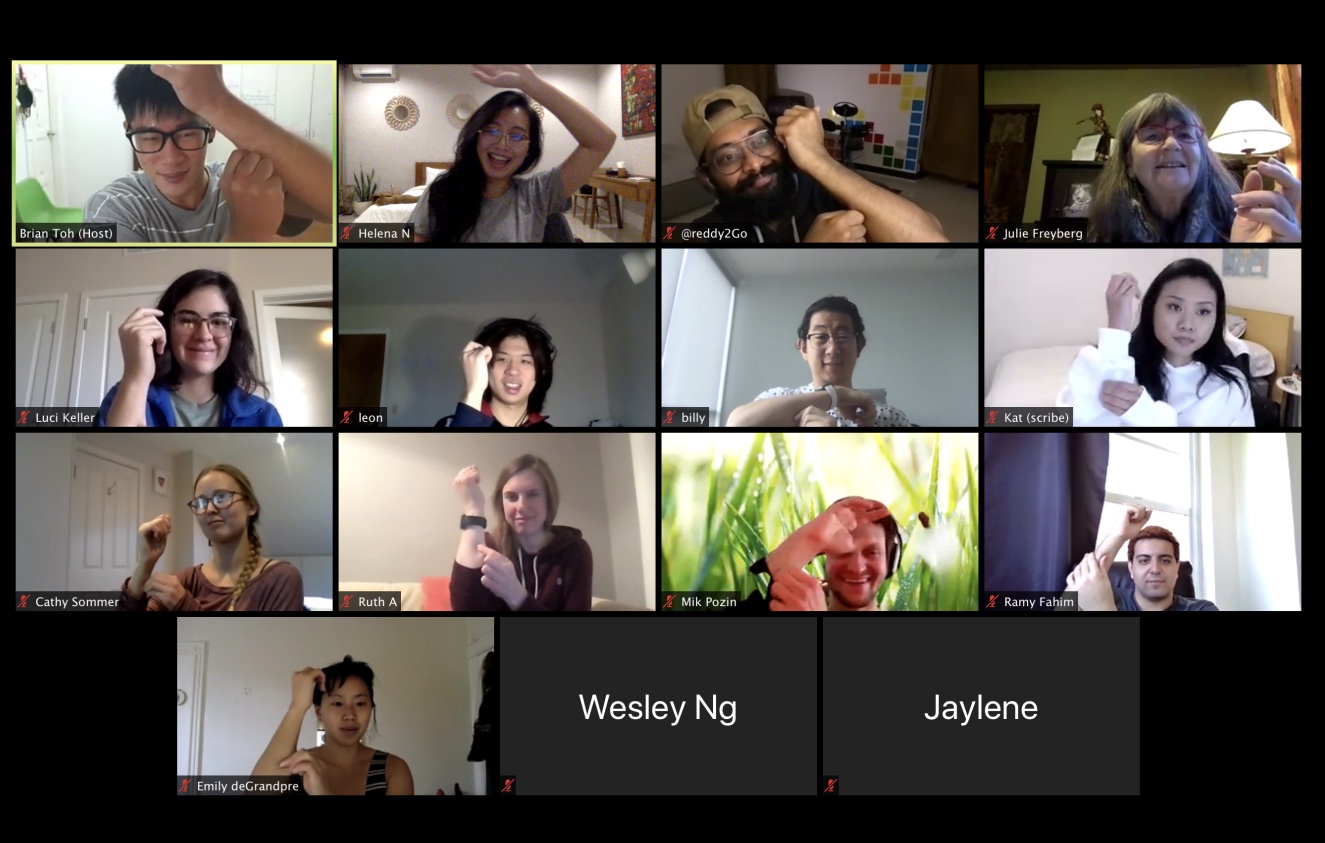By fellow Interintellect Brian Toh — first published on his blog
If you have never attended an Interintellect Salon, it is an absolutely lovely experience; conversations of such a diverse range of topics and ideas, very literally the most interesting conversations on the internet. Joining “the ii” has been one of my best experiences this past half a year, and I would recommend anyone to pick up a Salon if they can!
Find out more about Interintellect!
Tuning into The Visceral
Dance and movement have played a major role in my life growing up and remains a core part of the identity I assume today. Within this past year or so, my journey with movement has placed me on paths that I never thought that I would assume; from working on a dance-journalism page, picking up Tricking, and to now as I explore somatics and the way we embrace the physical world around us.
It was my absolute pleasure to have hosted a Salon in December, which I titled Tuning into the Visceral, aiming to explore the way that we experience our kinesthesia, and how can we tune ourselves to be slightly more aware, through our movement?
I was so surprised by the turnout and the range of people that I got for the Salon, Dancers of different genres, Yoga Practitioners, Feldenkrais, Alexander Technique, and just people plain interested in what sharing a space with me.
Here is a quick summary of what happened last Salon
(thank you so much Katrina for the notes)
Movement as Identity: Is there a difference between being a dancer (or active mover) versus a normal human being? At what point do we forget how to move?
This was an idea that I have been exploring for a while, in the sense of “how can I bridge the gap between dancers and community?” Exploring the question of “bridging the gap”, and exploring intuition in problem-solving, I began thinking along the lines of, how intuitive is our movement?
Movement and Space: Movement requires the existence of a pre-determined reference point in space.
From a standing position, any change of such position requires a shift of weight, anchored to the ground. When we notice this, we probably first begin by noticing the contact of our feet against the ground. Does visceral movement absolutely depend on the environment (external input), or does it come from a more internal sense?
“Kinesthetic Literacy” / “Visceral Insight” / “Kinesthetic Metaphors”
How can we use our movement to describe something to another person? Why is it that there are certain movements we already understand without being taught? How do we relate to each other and how much is missing from our personal journeys of awareness if we’re only communicating through verbal interaction?
Micro-Movement
This is one of my more philosophical tangents, where I believe everything is movement. Stillness is not the absence of movement, we are still growing, and moving, we just cannot perceive just yet. For example, a tree. A tree, is always growing, always changing, just way slower than we can think. Our perception, as bodies in this physical space, is limited by our embodiment of it.
What is our relationship to movement in our bodies?
Often we are too unaware of what is going on within our bodies. When was the last time, you noticed your breath, your posture, the distance between your eyes and the screen? Where are the points of tension? The state of our body influences our thoughts and perception, and there was this wonderful line said in the Salon “science of yoga isn’t in the brain but in the body”. Our movement, is what connects our cognitive sense, or soul even, to the world.
What does movement communicate? What does it connect us to?
Have you ever danced with a partner? I think the most difficult part of learning to dance with someone, is learning how to get used to each other’s weight shift, and most of the time this comes as wordless.
How do we physically connect in a virtual space?
I’ve been recently experimenting with somatics, and within, I wonder if I can recreate the experiences that I feel (based on my research on mirror movements in neurology) for someone else. It was an interesting experiment, and some exercises definitely worked better than others; but the felt sense of physicality touching someone in real life was agreed to be undeniable.
Movement As A Language — new ii Salon!
I am so excited to announce that I am going to be hosting a follow up to this Salon on the 7th of February, 8PM (GMT+8)!

This time I intend to touch on Movement As A Language building on ideas of how we communicate through movement.
If dance is a language, how do we communicate through movement? In turn, how do we communicate movement and the visceral feelings of the body to someone that doesn’t speak the same language?
There are three main areas that I would like to approach and discuss
1.Learning New Movement
How do we break down what we know intuitively within our body to share and teach with someone else, and how do we flip this in the opposite direction towards learning new movement for ourselves?
2. Movement in a Recordable Format
How may we better record movement and choreography for the ages? The way scriptures are passed down, how may we learn to “write” dance better such that we can preserve our movement for the ages, for the sake of artistry and a record of our current limits of physicality.
3. Communicating Through Dance
When we move, what are we trying to say? What is the vocabulary and structure behind our movement, and how much of what we communicate through our movement is intuitive versus non-intuitive. How do we communicate through our movement to someone that does not speak the same body language as you?
Slots are limited, but I would really love to have you come along as I explore Movement as A Language!
Movement As A Language: ii Salon
If you like this newsletter, I write every week! It would encourage me a lot to see numbers go up and make me more extrinsically motivated and that is awesome!

